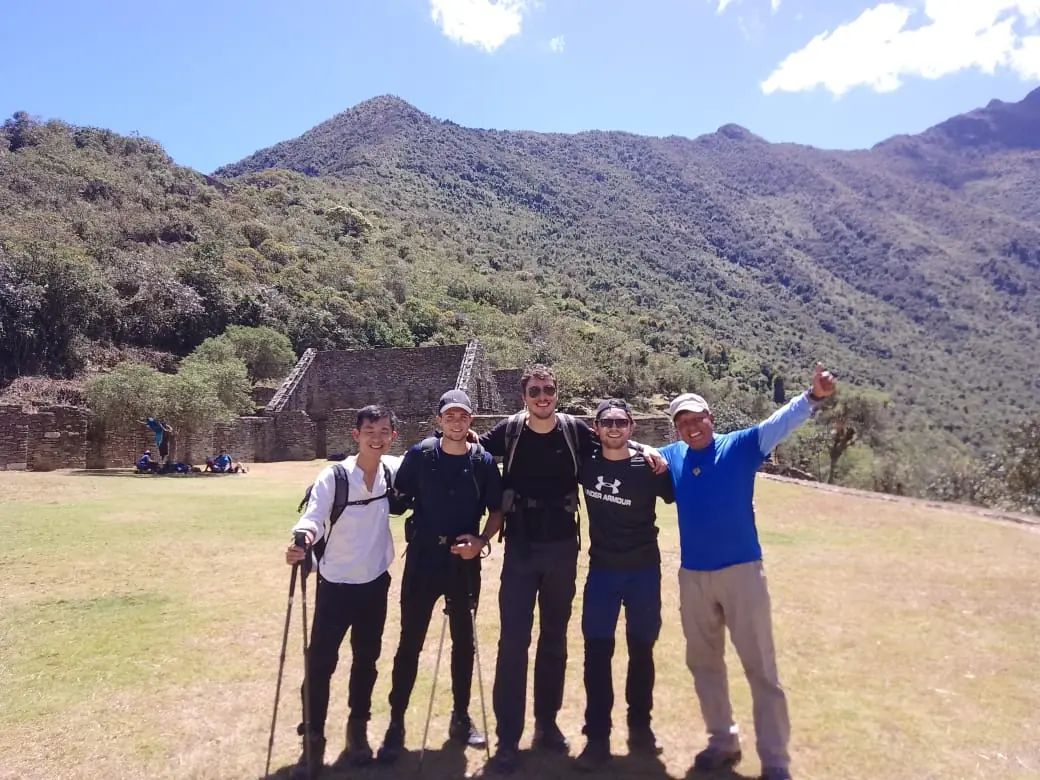Find the best travel tips to experience a unique adventure in Choquequirao, the “sacred sister of Machu Picchu.” If you dream of exploring this archaeological gem in the Peruvian Andes, here you’ll find all the information you need: from how to get to Choquequirao from Cusco to details about its history, the difficulty of the trek, and the best time to take on this challenge. Dive into this adventure and get ready to uncover secrets and mysteries that have captivated travelers from around the world.
How to Get to Choquequirao from Cusco?
The most common route to Choquequirao starts in the city of Cusco. From there, you’ll need to head to the town of Cachora, which is about a 4-hour drive away. This journey takes you through stunning Andean landscapes that prepare you for the trekking challenge. Once in Cachora, the hike begins, covering approximately 62 kilometers (round trip). Along the way, you’ll experience significant altitude changes, going from 3,100 meters to 1,400 meters above sea level, which adds a considerable physical challenge. It’s essential to be in good physical shape and, if possible, travel with an experienced guide who knows the route.
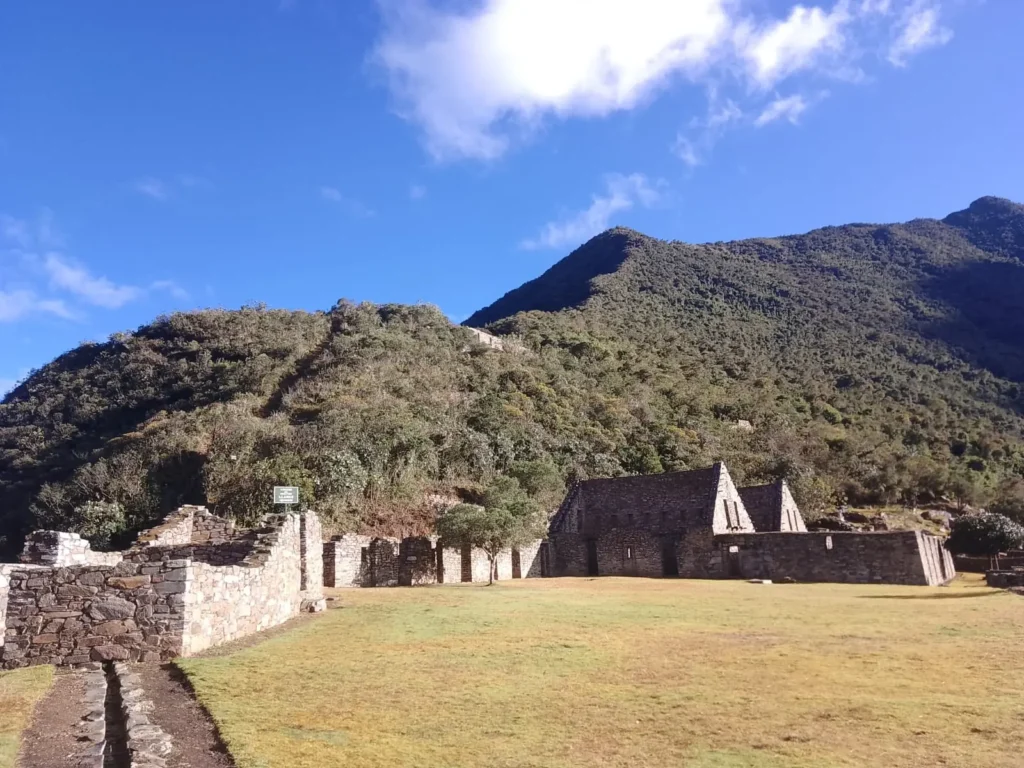
What Do the History and Mysteries of Choquequirao Tell Us?
Choquequirao, which means “Cradle of Gold” in Quechua, was an important Inca ceremonial and administrative center. Built in the 15th century, this site hides numerous mysteries and secrets that have fascinated archaeologists and travelers for generations. The layout of its terraces, plazas, and ceremonial structures reveals the complex social and spiritual organization of the Inca era. The history and enigmas surrounding this place make it a must-visit destination for those looking to delve into the past of the Andes. Exploring Choquequirao is like opening a living history book, where every stone and water channel tells part of the fascinating Inca narrative.
What Is the Difficulty and Duration of the Choquequirao Trek?
The trek to Choquequirao is considered moderately to highly difficult due to the steep trails and sudden altitude changes. The hike typically takes 4 to 5 days, depending on the group’s pace and weather conditions. Good physical fitness is essential, as the long days and rugged terrain can pose a significant challenge, even for experienced hikers. Many travelers recommend pre-trek training and practicing hikes on similar terrain to prepare adequately. Following these travel tips for Choquequirao will help you better organize your itinerary and adjust the pace of your journey to make the most of every moment without burning out too soon.

What to See in Choquequirao?
When you arrive at Choquequirao, you’ll be greeted by a landscape full of wonders. Highlights include:
- Agricultural Terraces: Designed to maximize soil fertility on the steep Andean slopes.
- Ceremonial Plazas: Spaces that reflect the spiritual importance of the site to the Incas.
- Architectural Structures: Masonry details that reveal the ingenuity and precision of Inca builders.
- Decorated Andenes: Featuring shapes resembling llamas, unique to this site and a source of fascination for experts and visitors alike.
Including this information in your planning will help you ensure you don’t miss any details and enjoy every corner of this enigmatic site.

What to Pack for the Choquequirao Trek?
To successfully tackle the Choquequirao trek, it’s vital to be well-equipped. Here’s a list of essential items:
- Appropriate Clothing: Bring waterproof and quick-drying clothes suited to sudden weather changes.
- Trekking Boots: Preferably waterproof and breathable to prevent blisters and provide good support.
- Sun Protection: Sunscreen, sunglasses, and a hat to protect against the intense Andean sun.
- Insect Repellent: Especially useful in the evenings and in dense vegetation areas.
- Lighting Equipment: A headlamp with extra batteries.
- Water Supplies: A purifier or water purification tablets to ensure safe drinking water.
- First Aid Kit: With basic medications and supplies for minor cuts or scrapes.
- Trekking Poles: Helpful for maintaining balance on uneven terrain.
Additionally, it’s a good idea to bring a camera to capture the stunning landscapes and unforgettable moments. These items, combined with these travel tips for Choquequirao, will ensure a safe and comfortable experience during your adventure.
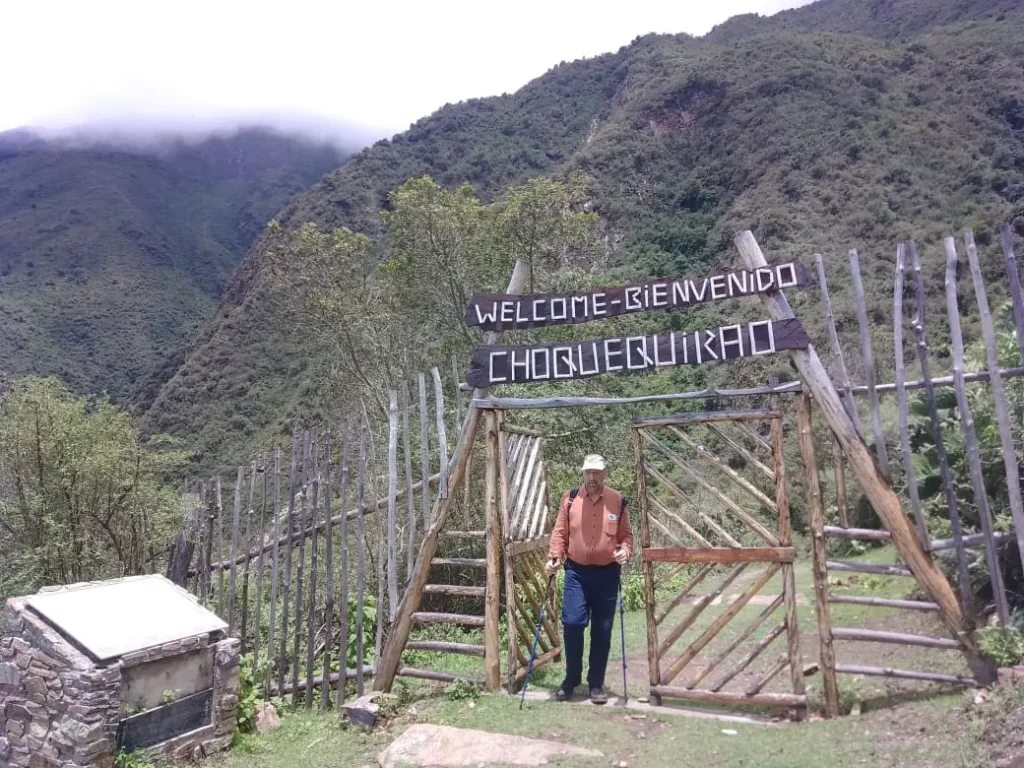
What Is the Best Time to Do the Trek?
The best time to undertake the Choquequirao trek is during the dry season, which runs from May to September. During these months, the weather is more predictable and favorable for outdoor activities, with less rain and more sunny days. Planning your trip during this period will allow you to enjoy clear skies and more stable temperatures, making the hike and exploration of the archaeological site easier. Take advantage of these travel tips for Choquequirao to choose the ideal time and avoid weather-related setbacks.
What Permits Are Required to Visit Choquequirao?
To access Choquequirao, you need an entry permit, which can be obtained through authorized tour operators or directly at the checkpoint in Cachora. It’s essential to check the specific requirements in advance, as they may vary depending on the season and current regulations. Ensuring you have all the necessary permits will prevent inconveniences and guarantee a smooth experience.
What Flora and Fauna Can You Encounter on the Choquequirao Trek?
During the trek to Choquequirao, the natural diversity will amaze you. The route passes through areas with varied flora, such as orchids, bromeliads, and ferns. Additionally, the local fauna includes bird species like hummingbirds, parrots, and other Andean endemic birds. On rare occasions, you might spot Andean mammals like the spectacled bear or deer, though these sightings are less common. Observing and respecting nature is part of the adventure, and following these travel tips for Choquequirao will allow you to enjoy the environment without disturbing the ecosystem.
What Level of Physical Fitness Is Required for the Trek?
The Choquequirao trek demands a good level of physical fitness, as it involves long hikes in mountainous terrain and altitude changes that can be challenging for the body. It’s recommended that travelers engage in specific training, such as long hikes and cardiovascular exercises, weeks before starting the journey. This preparation minimizes the risk of fatigue or injuries during the trek. Consider these travel tips for Choquequirao and evaluate your fitness level to prepare adequately for this challenge.

Is It Necessary to Hire a Guide for the Trek?
While not mandatory, hiring a local guide is highly recommended for those unfamiliar with the area or who want to make the most of the experience. An experienced guide will not only help you navigate the complex network of trails but also provide valuable insights into the history, culture, and mysteries of Choquequirao. Additionally, having a guide reduces the risk of mishaps in emergency situations.
What Essential Gear Is Recommended for the Trek?
In addition to the basic gear mentioned earlier, other items can make a difference during the hike:
- Route Map and Compass or GPS: Essential for staying oriented in remote areas.
- Sleeping Bag: Suitable for low temperatures, considering the cold nights in the mountains.
- Tent: Make sure it’s sturdy and capable of withstanding sudden weather changes.
- Food and Energy Snacks: Bring enough provisions for the trekking days, prioritizing easily digestible, high-calorie foods.
- Cash: For unexpected expenses, as cards may not be accepted in some areas.
Packing these items, following these travel tips for Choquequirao, will allow you to focus on the experience without worrying about missing essentials.
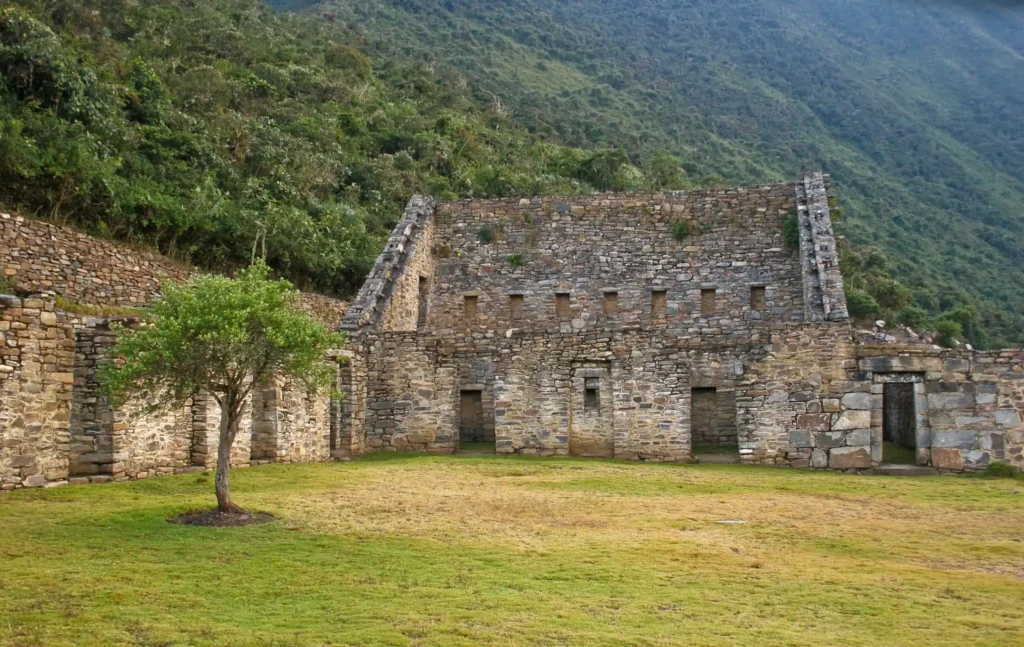
What Accommodation Options Are Available Along the Way?
During the trek, you’ll find designated camping areas. Some zones offer basic services like bathrooms and cooking areas, but overall, the infrastructure is limited. Therefore, it’s crucial to bring your own camping gear and plan your stops in advance. This aspect is key within the travel tips, as good accommodation planning during the hike will help you recharge and fully enjoy the experience.
What Is the Weather Like During the Trek?
The weather in the Choquequirao region can be quite variable. During the dry season, mornings and afternoons are usually sunny, while nights can be surprisingly cold. Conversely, during the rainy season, you should be prepared for heavy rainfall that can make progress difficult. Always check the weather forecast before starting the hike and pack appropriate clothing and gear to handle sudden weather changes. Following these travel tips will ensure you’re prepared for any weather-related eventualities.
Are There Health Risks During the Trek and How to Mitigate Them?
As with any mountain activity, there are some health risks associated with altitude, sun exposure, and weather variability. It’s essential to:
- Acclimatize Properly: Spend a couple of days adapting to the altitude before starting the trek.
- Stay Hydrated: Drink water regularly to avoid dehydration.
- Protect Yourself from the Sun: Use sunscreen and sunglasses to prevent sunburn and eye damage.
- Carry a First Aid Kit: With medications for altitude sickness and other emergencies.
These precautions will help you minimize risks and enjoy the adventure with greater safety.
Frequently Asked Questions
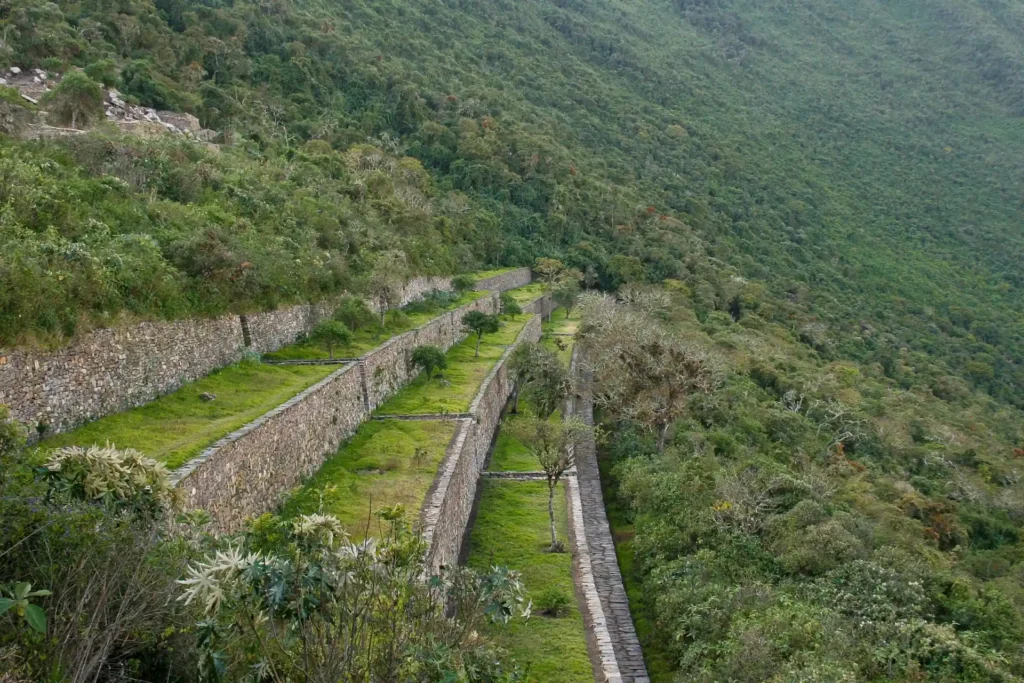
1. What Is the Best Time to Visit Choquequirao?
The best time is during the dry season, from April to October, when the weather is most favorable for trekking and exploration.
2. Is It Mandatory to Hire a Guide for the Trek?
It’s not mandatory but highly recommended to ensure safety and fully appreciate the historical and cultural richness of the site.
3. How Long Does the Choquequirao Trek Take?
The trek usually takes 4 to 5 days, depending on the group’s pace and weather conditions.
4. What Permits Are Needed to Visit Choquequirao?
An entry permit is required, which can be obtained through authorized tour operators or at the checkpoint in Cachora. It’s recommended to check the requirements in advance.
5. What Level of Physical Fitness Is Needed for This Trek?
A good level of physical fitness is required, as the trek involves long hikes and altitude changes. Pre-trek training is essential.
6. What Gear Is Essential for the Trek?
Essential gear includes appropriate clothing and footwear, trekking poles, a first aid kit, a map or GPS, and basic camping equipment.

Book with us today and secure your trip to this hidden wonder in the Peruvian Andes. From the challenging trek to the historical mysteries of the “sacred sister of Machu Picchu,” we’ll be with you every step of the way. Schedule your adventure now and get ready to explore one of the world’s most fascinating destinations.
